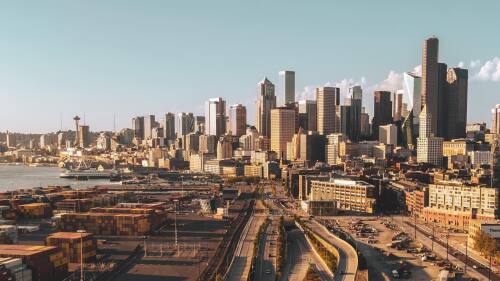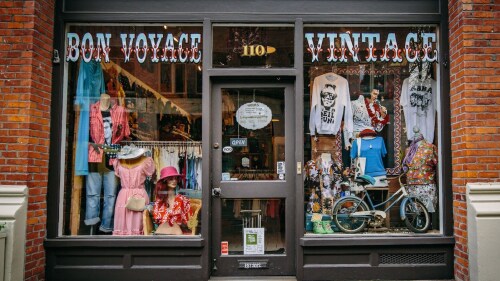Well, this the pits. Recently, an intersection near Interlaken Park in Capitol Hill developed a growing sinkhole — you know those weird road craters that form from eroded rock?
The Seattle Department of Transportation said the depression has to do with a broken clay pipe (which is being repaired) — and not, say, an interdimensional god-beast slowly burrowing its way into our world to wreak havoc. Whew.
Regardless, any time there’s a freaky sinkhole around here, it conjures memories to the mother of ‘em all — the Great Ravenna Sinkhole of 1957.
Hole-y moley, that’s huge
On the night of Nov. 11, 1957, a sewer line broke under Ravenna Boulevard between 16th and 17th Avenues NE, creating a yawning chasm that was 60 ft deep, 120 ft wide, and 200+ ft across. The giant hole took out a 30-ft light pole and a large chestnut tree, while forcing nearby residents to evacuate.
It took two years and $2 million to fix the damage, as workers injected grout into the earthy problem areas and reinforced the sewer line. Amazingly, nobody was hurt and the surrounding homes remained intact. Still, the chasm’s notoriety remained. At the time, it was the biggest sinkhole ever recorded.
Paying the piper
Thankfully, Seattle hasn’t seen a sinkhole that large since, but there have been some other alarming abysses over the decades. One near the University Bridge in 2007 ate a couple of cars and another in West Seattle in 2011 went three stories deep.
All of those sinkholes were caused by broken or failed pipes — just like the recent one in Capitol Hill. Much of that has to due with the city’s older infrastructure of sewage and water lines that corrode over time.
The good news is that once the pipes are fixed, the broken part of the street can be patched up. As for the god-beast, they’ll have to take the escalator.











